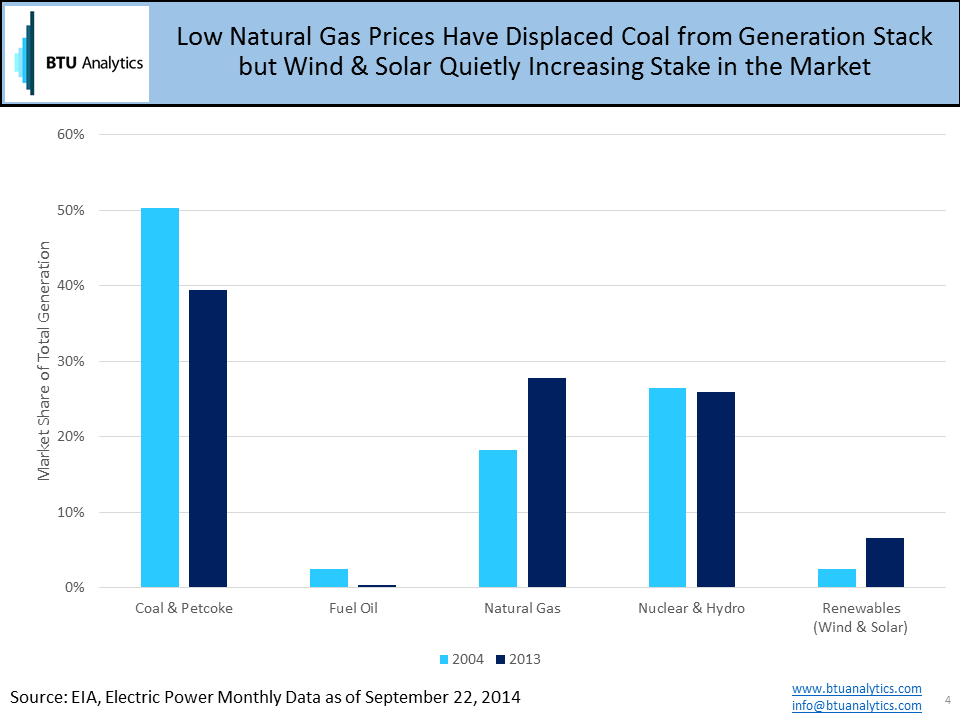US Demand for electricity since 2004 has remained relatively flat as economic expansion of 1.7% since 2004 (Source: World Bank) has been offset by consumer trends in energy efficiency.

It’s no secret though to those in the natural gas or coal industry that the growth in natural gas fired generation has been to the detriment of competing fuel sources. Since 2004, US natural gas generation has grown from 18.3% of electricity generation to 27.7% in 2013. A combination of factors has led to the increase in market share over the last decade including environmental regulations impacting coal producers and generators, but the rapid expansion in natural gas generation in the last several years has been driven by price.

What the market has not been paying as close attention to though is the growth of wind and solar generation. While still small in the overall scheme of US power generation, renewables (wind and solar) have grown from 2.5% in 2004 to 6.5% of generation in 2013. In 2014, monthly data from the EIA indicates the trend has continued with the data through June indicating renewables generated 7.3% of total US electricity. Growth off a small base doesn’t matter until the base gets to a meaningful number and it would appear we are approaching that point in the impact of renewables to electric generation.

BTU put together two cases based on the market share trends over the last decade. The first case represents wind and solar contributing 0.65% of incremental market share per year (the historical average since 2009). At this pace, renewables reach 11.15% market share in 2020 and if the pace continues at the recent average of 0.97%, the renewable market could reach 13.14% in 2020. Both of these cases represent about 5% increase in market share for renewable power generation or about 1,896,875 MMBTU/day that would no longer need to be generated. If we assume the increases in generation from wind and solar displace natural gas generation, this would represent a decline in gas demand from the power sector of approximately 3.8 Bcf/d. Considering we know that coal fired generation will be shutting down alongside new gas fired power plant construction, it is concerning from a natural gas market perspective that the impact from renewables could shed so much demand. While we are eagerly awaiting demand increases from industrial end users and exports, solar and wind are quietly eroding domestic demand for coal and natural gas.








